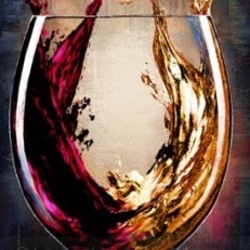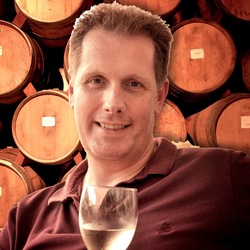Micro Bio Wines
Cantillon Brewery
Kriek 100% Lambic Bio
So-much-fruit. Glad we drank this young. — 5 years ago
Emiliana Organic Vineyards
Natura Valle del Bio - Bio Pinot Noir
Very natural smooth for Pinot — 6 years ago
Launois Père et Fils
Veuve Clémence Grand Cru Champagne Chardonnay
Micro-bubbles galore, Yum! This might be close second for a Friday evening standard for @David T but tonight it is flowing into glasses on the complete opposite side of the Country. A wonderful Blanc de Blanc Champagne.
Nose has freshly scrubbed lemon, grapefruit peel, sliced Granny Smith apple, wet chalk, cold brioche and Gardenia blossom in a breeze.
Palate is fresh orange peel, grapefruit peel (like really wow), tart green apple, fresh walnut, crunchy brioche with a little hint of sweetened butter and a splash of acidic ocean water.
Finish is intense, yet elegant and lasting for many minutes. We are quite looking forward the the evolution of this bottle across the evening, as it warms from 46°F and gains air time.
Thank you @David T @Sofia Jalilie for allowing us into your week closing tradition. The next bottle should have us closer together. — 6 years ago
Château Brane-Cantenac
Grand Cru Classé en 1855 Margaux Red Bordeaux Blend 2005
I have a six-pack of this 05. I thought after 10 years in bottle, it would be interesting to check in on its evolution. While tasty, I’ll wait another 8-10 to open another. Even after 2-3 hours in the decanter, it’s still a very young adolescent. On the nose, slightly sour blackberries & dark cherries, dark currants, baked black plum, haunting blue fruits, anise, whiff of spice, steeped tea, dry stones, dry crushed rocks with dry top soil, caramel, vanilla with fresh & dry red florals. The body is thick & full. Tannins are starting to round out. It’s velvety on the palate. The fruits are; bright, fresh & ripe and really show the greatness of the 05 vintage. Dark currants, blackberries, dark cherries, baked black plum, haunting blue fruits, baked strawberries, cherries, raspberries on the long set, dark spice, clay & loamy dry top soil with crushed rocks, dry stones, cigar with ash, graphite, dry stems, slight herbaceous character, mint, used leather, clove, caramel, vanilla, fresh & dry red florals with violets. The round acidity is about perfect. The structure and length are still strong. The balance is in harmony. As for the long finish, it’s lush, ruby, rich and well polished. Photos of; Chateau Brane Cantenac, large wood vats, Henri Lurton and Estate vines. Producer notes and history...Chateau Brane Cantenac began in the early 17th century. At the time, the estate was known as Domaine Guilhem Hosten. Even that far back, wine was produced from the property. In fact, the wine was so highly regarded it was one of the more expensive wines in Bordeaux. It sold for almost as much money as Brane Mouton. This is interesting because of who went on to buy the vineyard in the 1800’s. The Baron of Brane, also known as “Napoleon of the Vineyards”, purchased the Chateau in 1833. At the time of the sale, the estate was called Chateau Gorce-Guy. To get the funds needed to purchase the Margaux vineyard, the Baron sold what is now called Mouton Rothschild, which was at the time of the sale, known as Chateau Brane-Mouton. Not such a good move with hundreds of years in hindsight! In 1838, the Baron renamed property taking his name and the name of the sector where the vineyards were located and called it Chateau Brane Cantenac. The Chateau later passed to the Roy family, who were well-known in the Margaux appellation in those days, as they owned Chateau d’issan. Moving ahead to 1920, the Societe des Grands Crus de France, a group of merchants and growers that owned several chateaux located in the Medoc including; Chateau Margaux, Chateau Giscours, and Chateau Lagrange in St. Julien, purchased Chateau Brane Cantenac. Five years later, M. Recapet and his son-in-law, François Lurton, took over Brane Cantenac along with Chateau Margaux. Lucien Lurton (the son of François Lurton) inherited Brane Cantenac in 1956. Today, the estate is still in the hands of the Lurton family. Brane Cantenac is owned and run by Henri Lurton. After being given the responsibility of managing Brane Cantenac, it was under the direction of Henri Lurton that large portions of the vineyard were replanted. Vine densities were increased, the drainage systems were improved and the plantings were also, slowly changed. The vineyard of Brane Cantenac is planted to 55% Cabernet Sauvignon, 40% Merlot, 4.5% Cabernet Franc and .5% Carmenere. Carmenere was used for the first time in the 2011 vintage. The only other Chateau I know that still uses Carmenere is Clerc Milon. The 75 hectare Left Bank vineyard of Brane Cantenac is essentially unchanged since it earned Second Growth status in the 1855 Classification. At least that is the case with the 45 hectares used to produce the Grand Vin of Brane Cantenac. Those 45 hectares are planted surrounding the Chateau. Those vines are located just in front of the Cantenac plateau and are the best terroir that Brane Cantenac owns. They have other parcels, which are further inland and much of those grapes are placed into their second wine, Le Baron de Brane. Those additional hectares can be divided into 3 main sections. Behind the Chateau, they have 15 hectares of vines on gravel and sand, 10 hectares across the road with sand, gravel and iron and a 13 hectare parcel with gravel called Notton, which is used for their second wine. The vineyard is planted to a vine density that ranges from 6,666 vines per hectare on the plateau and up to 8,000 vines per hectare for the vines located behind chateau, in their sandier soils. The higher levels of vine density are always found in the newer plantings. The terroir of Brane Cantenac consists of deep gravel, sand and clay soil. Experiments in the vineyards are currently looking at becoming more organic in their vineyard management. Today, more than 25% of Brane Cantenac is farmed using organic farming techniques. It is expected that over time, the amount of hectares farmed with organic methods will be increased. Brane Cantenac has gone through 2 relatively recent modernization’s in 1999, when they added began adding the first of their smaller vats to allow for parcel by parcel vinification and then again in 2015 when they completed a much more complete renovation of their cellars and vat rooms. While Brane Cantenac is a traditional producer, they are no stranger to technology as they were one of the first estates to embrace optical grape sorting machines. In very wet vintages, they can also use reverse osmosis. To produce the wine of Chateau Brane Cantenac, the wine is vinified in a combination of temperature controlled, traditional, 22 oak vats, 18 concrete tanks and 20 stainless steel vats that vary in size from 40 hectoliters all the way up to 200 hectoliters, which allows for parcel by parcel vinification. 40% of the fermentation takes place in the oak vats. The oldest vines are vinified in vats that are selected to allow for separate parcel by parcel vinification. The younger vines are vinified more often together in the same vats. However, the Carmenere is entirely micro-vinified, meaning that those grapes were completely vinified in barrel, using micro-vinification techniques. This can also happen because the amount of grapes produced is so small. Some vats can be co-inoculated, meaning they go through alcoholic fermentation and malolactic fermentation simultaneously. At Chateau Brane Cantenac, malolactic fermentation takes place in a combination of French oak tanks and barrels. The wine of Brane Cantenac is aged in an average of 60% new, French oak barrels for 18 months before bottling. The initial 2 months of aging is done with the wine on its lees, which adds more depth to the wine. There second wine is Le Baron de Brane. Le Baron de Brane is not new. In fact, previously, the second wine went under the name of Chateau Notton, which took its name from one of the main parcels where the grapes were planted. During the late 1950’s and into the 1960’s, having a second wine was important as the estate declassified 3 vintages, due to extremely poor, weather conditions in 1956, 1960 and 1963. Production of Chateau Brane Cantenac is about 11,000 cases per year. — 8 years ago

Hermann J. Wiemer
HJW Bio Riesling 2017
Good balance of acidity, sweetness (very mild), and and fruitiness. Ripe peach on the nose but more nectarine on the palate. Not exceedingly exciting but good execution. — 5 years ago
Cantillon Brewery
Gueuze 100% Lambic Bio Malt
Drank after a Boon Geueze (which I enjoyed) and it was far better, more refined and delectable. — 5 years ago
Meyer Family Vineyards
Micro Cuvée McLean Creek Vineyard Pinot Noir 2015


Le Bio Balthazar
Minervois Syrah Grenache Noir 2014
@Ian Wright try this one — 8 years ago
Krug
Brut Rosé Champagne Blend
NYE =‘s Krug Rosé. I can’t say I completely agree with what the Krug fireplace mantel suggests, but it’s certainly very delicately delicious and will put a guaranteed smile on your face! The mouthfeel is entirely feminine. The micro bubbles are unmistakable Krug and made with great precision. Fruits of; black raspberries, black cherry, cherries, watermelon mid way to the rhine, strawberries & understated citrus notes with pink grapefruit dominating the blend. The fruits are so restrained but are perfectly styled on the leaner side yet so ripe, juicy and delicious. There’s brioche but it comes fresh from the best of Parisian bakeries. Sea spray, minerality that is so soft & delicate, it’s hard to call it minerality. Krug Rosé reveals the very best, smooth, silky, velvety chalkiness that can be found on this planet. Pink roses/florals for days. Perfect acidity and a glorious, long, rich, beautiful finish that doesn’t end. If you enjoy wines that show pure elegance, perfect finesse and haven’t had Krug Rosé, treat yourself to a bottle or a split. The split may leave you wanting more. However, I can’t think of a better wine/way to celebrate the current year and bring in the next. Happy New Year all! May 2018 be peaceful, successful and spent with your family, best friends, prodigious wines and excellent food pairings! — 8 years ago
Château Falfas
Côtes de Bourg Red Bordeaux Blend
Perfect bio blend with our ravioli. Lighter than we expected. — 9 years ago
Bio-Weingut H. u. M. Hofer
Von Den Rieden Grüner Veltliner
this shit was GAS ! very dry and was nice to drink when it was cold and shitty outside — 5 years ago
Caruso & Minini
Naturalmente Bio Sicilia Nero d'Avola 2018
First wintery Sunday with depressing cold drizzle. My response: home cooked Pasta Fagiole with soft Japanese yeast bread with lots of butter. What a wonderful comfort food match. The Etna Nero d’avola is young, juicy, and fruit-forward. Cassis, Boysenberry, and bright citrus notes. Medium weight, nice viscosity, and enough acidity to stand up to the tomato’s and good olive oil drizzle. Touch of green stems actually balances the fruit. Nice long finish and makes me consider picking up a few more for rustic pizza/pasta. — 5 years ago
Nicolas Joly
Clos de la Coulée de Serrant Savennières Chenin Blanc 2015
Yes it is biodynamic which I tend to dislike, moreover this wine travels very badly and most of the bottles I drunk in the USA were bad. Surprise this one is really good. Color straw golden (my wife immediately caught on and looked surprised until I told her “bio”. Slightly oxidative, smokey, good mineral content. Warm vintage but pulls it off. Best coulee I ever tasted in NY. — 6 years ago
Veuve Clicquot Ponsardin
La Grande Dame Brut Champagne Blend 2006

Bio-Weingut H. u. M. Hofer
Niederösterreich Zweigelt
Favorite white... — 8 years ago















Peter van den Besselaar
Vintage 2019 | a favorite producer of mine. 100% Cabernet franc, vines 25 a 40 years old. Bio wine. It is so much fun to taste the difference between Saint Nicolas de Bourgueil and for example Saumur Champigny. Pop and pour. Frivolous raspberry bouquet, gains expression with aeration. It’s not the power that catches the eye, but finesse and elegance. Medium weight. Lovely now, paired with ostrich stew and mixed vegetables from the oven. Happy. — 3 years ago